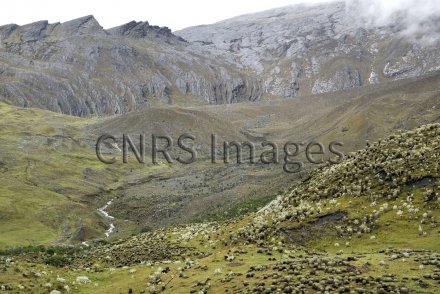Production year
2009

© Bernard FRANCOU/LGP/CNRS Images
20140001_1816
Partie inférieure du complexe morainique du glacier Ritacuba negro, en Colombie. Lorsqu'un glacier recule, il dépose des débris rocheux, appelés moraines. Sur les cailloux exposés vers l'atmosphère, des isotopes sont produits par réaction au rayonnement cosmique. Des échantillons ont été prélevés sur ces moraines pour mesurer ces isotopes et dater ainsi les phases d'extension du glacier. Les glaciers tropicaux sont en retrait de plusieurs kilomètres depuis environ 15 à 20 000 ans. Mais l'analyse de 21 glaciers andins montre que ce retrait a été ponctué de stabilisations, voire de "ré-avancées", la plus marquée étant intervenue il y a environ 14 000 ans, lors d'une période froide enregistrée en Antarctique. Une autre, plus modeste, s'est produite il y a environ 12 000 ans, lors d'une phase de refroidissement du Groenland et de l'Atlantique nord.
The use of media visible on the CNRS Images Platform can be granted on request. Any reproduction or representation is forbidden without prior authorization from CNRS Images (except for resources under Creative Commons license).
No modification of an image may be made without the prior consent of CNRS Images.
No use of an image for advertising purposes or distribution to a third party may be made without the prior agreement of CNRS Images.
For more information, please consult our general conditions
2009
Our work is guided by the way scientists question the world around them and we translate their research into images to help people to understand the world better and to awaken their curiosity and wonderment.